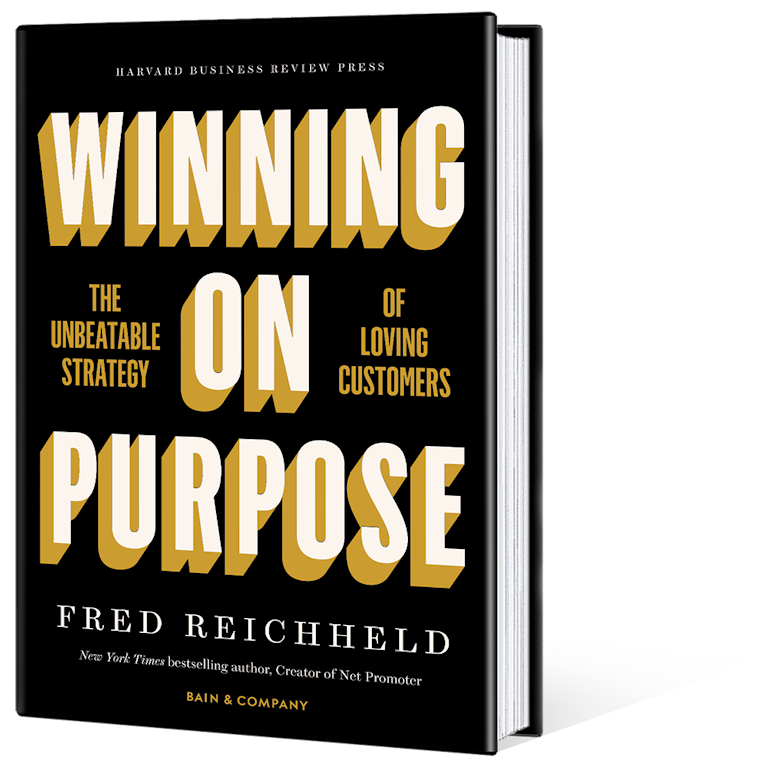
This article originally appeared on LinkedIn.
One day I asked an associate at the Apple Store in Boston what it’s like to receive a top review from a customer. “It makes me feel like I’m living the right life,” she replied.
This woman had the store’s highest individual Net Promoter Score—her role was helping customers learn how to get the most out of their Apple products—and she clearly had a way with flummoxed customers. But before you dismiss her as an outlier, think about this: Have you ever gotten a standing ovation?
I’ve been lucky enough to get a couple, times when the stars aligned and I really connected with an audience. The first was following a performance with my college singing group, and I still remember it well. I felt like I was flying.

Winning on Purpose: The Unbeatable Strategy of Loving Customers
This new book by Fred Reichheld, Darci Darnell, and Maureen Burns demonstrates that great leaders embrace a higher purpose to win, and Net Promoter® shines as their guiding star.
Getting a perfect 10 is like a standing ovation for customer service. Even as people on the front line have dealt with more than their fair share of extreme customer behavior during the pandemic, there is really nothing so rewarding.
With the Great Resignation and striking workers hobbling organizations and worrying the occupants of C-suites around the world, this story is a reminder that the common tricks many companies employ to build an attractive workplace—free snacks, happy hours, Ping-Pong—will never make them great. What will are leaders who believe their company’s primary purpose is to enrich the lives of customers.
These great leaders inspire their teams to embrace a customer-focused mission, and give them the tools, systems, and culture to do so. At the organizations they lead, employee satisfaction is high and all stakeholders benefit, including investors. Companies with the highest NPS—the best track record at enriching customers’ lives—generate total shareholder returns 2–3x the market average, our research has found. It makes sense. Happy customers come back for more and refer their friends, becoming a source of sustainable prosperity that can be used to fund generous compensation, benefits, and career growth. Unfortunately, today just 10% of corporate leaders believe their firm’s primary purpose is customer happiness and success.

Customer Love Quiz
Learn how customer-centric your organization is today and receive practical suggestions for how to move forward on the path.
Not long after I interviewed the NPS leader at the Apple Store in Boston, I found myself standing next to the store manager listening to employees share recent successes with a group of colleagues. “This is what I like best about my job,” he said, leaning over. “When I see my team members getting recognized for enriching customers’ lives, I ask myself, what better gift could I give my team, what could possibly be more rewarding as a leader?”
Companies need happy employees to thrive. Good employees don’t want just a job, they want to embrace a meaningful purpose—and the ability to enrich the lives they touch. Great leaders build communities where that can happen, and they provide the right culture, tools, and training. They construct systems to ensure employees hear the standing ovations they earn from their customers. They do all this because wise leaders understand that only customers can truly make employees happy.

